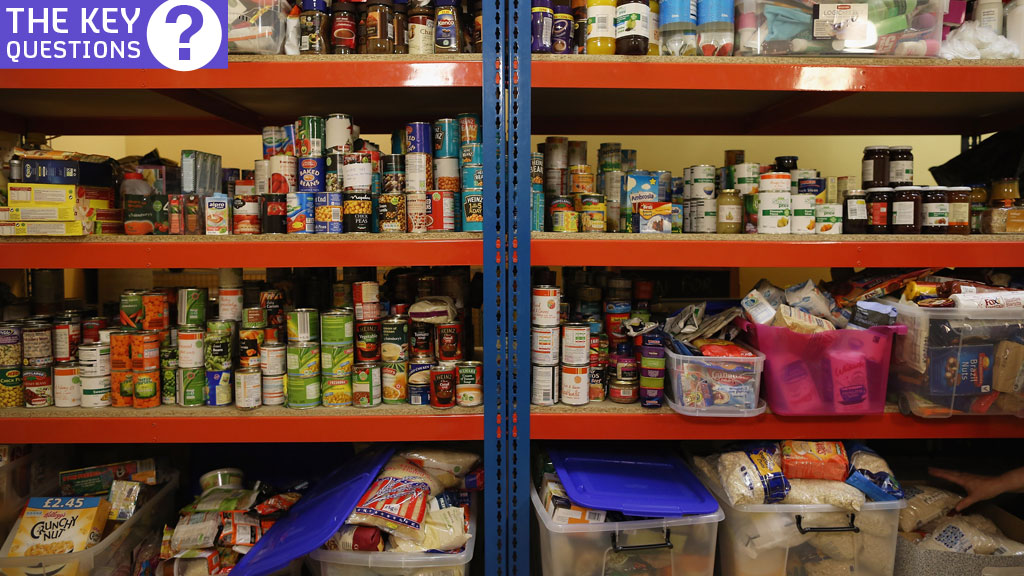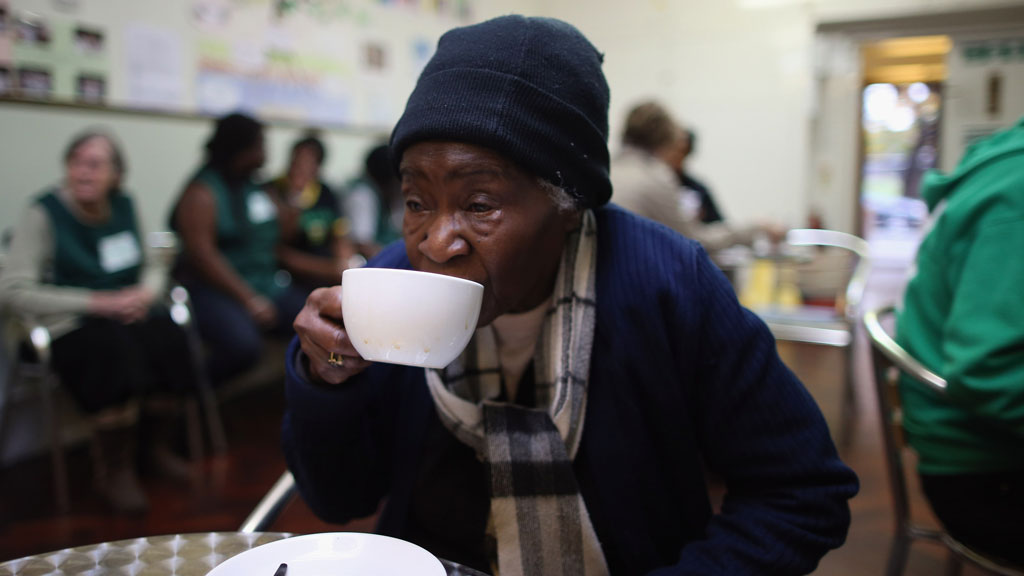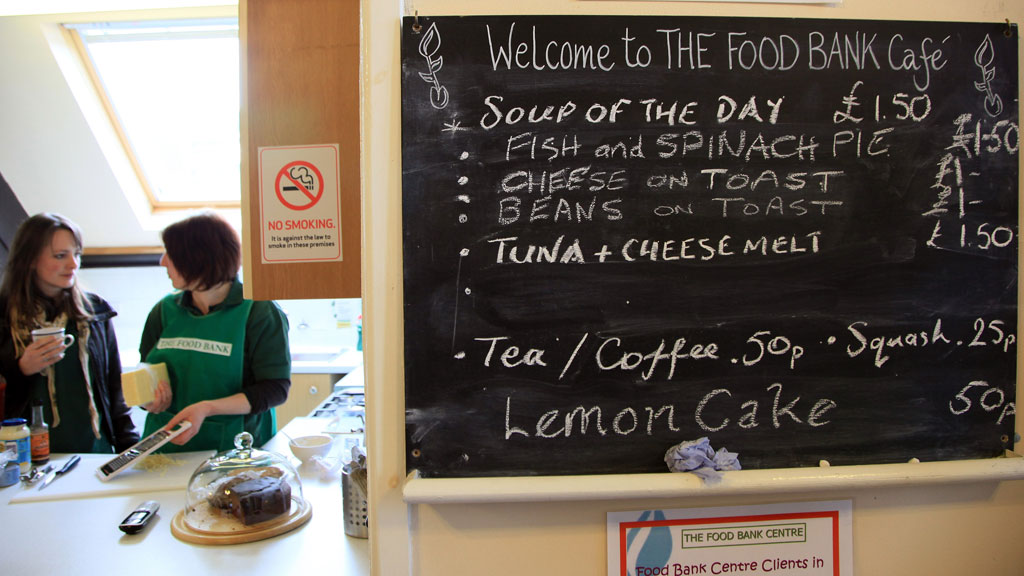The truth about food banks: dependency or welfare crisis?
Food banks are “consistently” seeing an increase in demand, a Defra-commissioned report concludes – but what are they and are benefits cuts to blame for their proliferation?

Benefits cuts, unemployment, and the increased cost of living have been blamed for driving the growth in hunger and poverty.
On the frontline of feeding the hungry are food banks, mostly licensed by the Trussell Trust. The trust say 350,000 people came to them for help in 2012 – nearly triple the number the previous year.
According to a recent study by Oxfam and Church Poverty Action more than half a million people may now rely on food banks.
What are food banks?
A food bank is a non-profit, charitable organisation that distributes food to clients who have difficulty purchasing enough food to avoid hunger.
Every client is referred to a food bank by a frontline care professional such as a health visitor, schools liaison officer or social worker. Volunteers help run food banks by packing, sorting and distributing the food in carrier bags.
Non-perishable food is donated by people in the community – schools, businesses, churches and individuals. Many food banks distribute food through café-style food bank centres, where clients can have cup of tea and talk to a volunteer.
In 2012-13 foodbanks fed 346,992 people nationwide. Of those helped, 126,889 were children – Trussell Trust
Volunteers can then signpost clients to other agencies and local services able to help resolve the underlying cause of the crisis. Food banks work in partnership with local charities and agencies such as debt advisors, drugs and alcohol advice services, housing charities, as well as mental health services.
Each Trussell Trust food bank is provided with ongoing support by regional and national staff, including back office support in functions like marketing, IT, fundraising and corporate relations.
The Trust is an apolitical charity that does not receive government funding, and food banks are not part of the welfare state.
What’s in a foodbox?
Trussell Trust food parcels were designed by nutritionists and contain a minimum of three days nutritionally balanced, non-perishable food.
It can contain items such as milk (UHT or powdered), sugar (500g), fruit juice (long life), soup, pasta sauces, sponge pudding (tinned), tomatoes (tinned).
Cereals, rice pudding (tinned), tea bags, instant coffee, instant mash potato, rice, pasta, tinned meat/fish, tinned fruit, jam biscuits or snack bar.
Although food is the main focus, the Trussell Trust sometimes receives donations such as books, nappies, baby food, toiletries and hygiene products which are given to those who really need them.

Who do food banks help?
Benefits cuts have often been blamed for forcing people into food poverty. On Thursday twenty-seven bishops wrote an open letter condemning the government’s “punitive” welfare reforms.
The majority of people turning to food banks are working age families, and while benefit delay and benefit changes account for a substantial number of referrals to food banks, many of those turning to them are in work.
The Trussell Trust believes less than three per cent of people visiting food banks are referred by Jobcentres. Only four per cent of people turned to food banks due to homelessness. 18 per cent are referred due to low income, 19 per cent benefit changes, 34 percent benefit delays.
Other reasons included domestic violence, sickness, refused crisis loans, debt and unemployment.
Do food banks create dependency?
Former Tory health minister Edwina Currie in January warned that food banks make users poorer. She said: “Free food subsidises low wages; it helps support the black economy.
“It pauperises those it seeks to help. Like giving money to ‘homeless’ beggars on London streets, it encourages more of what it seeks to relieve.”
Trussell Trust food banks deliberately operate a very different model to food bank models in the USA, Canada and parts of continental Europe.

In particular, Trussell Trust food banks discourage dependency on a food bank. Many international food banks do not limit support, enabling dependency on a food bank to develop.
Trussell Trust food banks do not give out food to anyone who turns up at a food bank. You have to be referred by professionals such as social workers. They are an emergency food service only.
Because Trussell Trust food banks work with non-perishable food donated by the public, they are able to provide nutritionally balanced food parcels that last three days. This differs to international food bank models that mainly work with short-dated surplus food.
Are food banks demand-led?
Former investment banker and peer David Freud told the Lords in 2013 that the increase in the usage of food banks was “supply led”.
He said: “If you put more food banks in, that is the supply. Clearly, food from the food banks is a free good and by definition with a free good there’s almost infinite demand.”
However, a Defra-commissioned report released in February found “no systematic evidence on the impact of increased supply and [that] hypotheses of its potential effects are not based on robust evidence.”
The Trussell Trust, which runs 400 food banks across the UK, also said the number of people receiving emergency food is growing disproportionately to the number of new food banks opening.
In 2013 numbers helped by food banks increased by 170 per cent whilst there was only a 76 per cent increase in new food banks opening.
A government spokeswoman told Channel 4 News: “Charities such as food organisations have always provided a valued service to those in need in their communities, in addition to the safety net provided by governments, and we should welcome the help they provide.
“That is why this government has given Jobcentre Plus advisers the ability to say to people who need help that they can go to a food bank. The literature review published today was commissioned as part of Defra’s general work on food in the UK to see what information was available on the issue.”
For more information on food banks visit www.trusselltrust.org